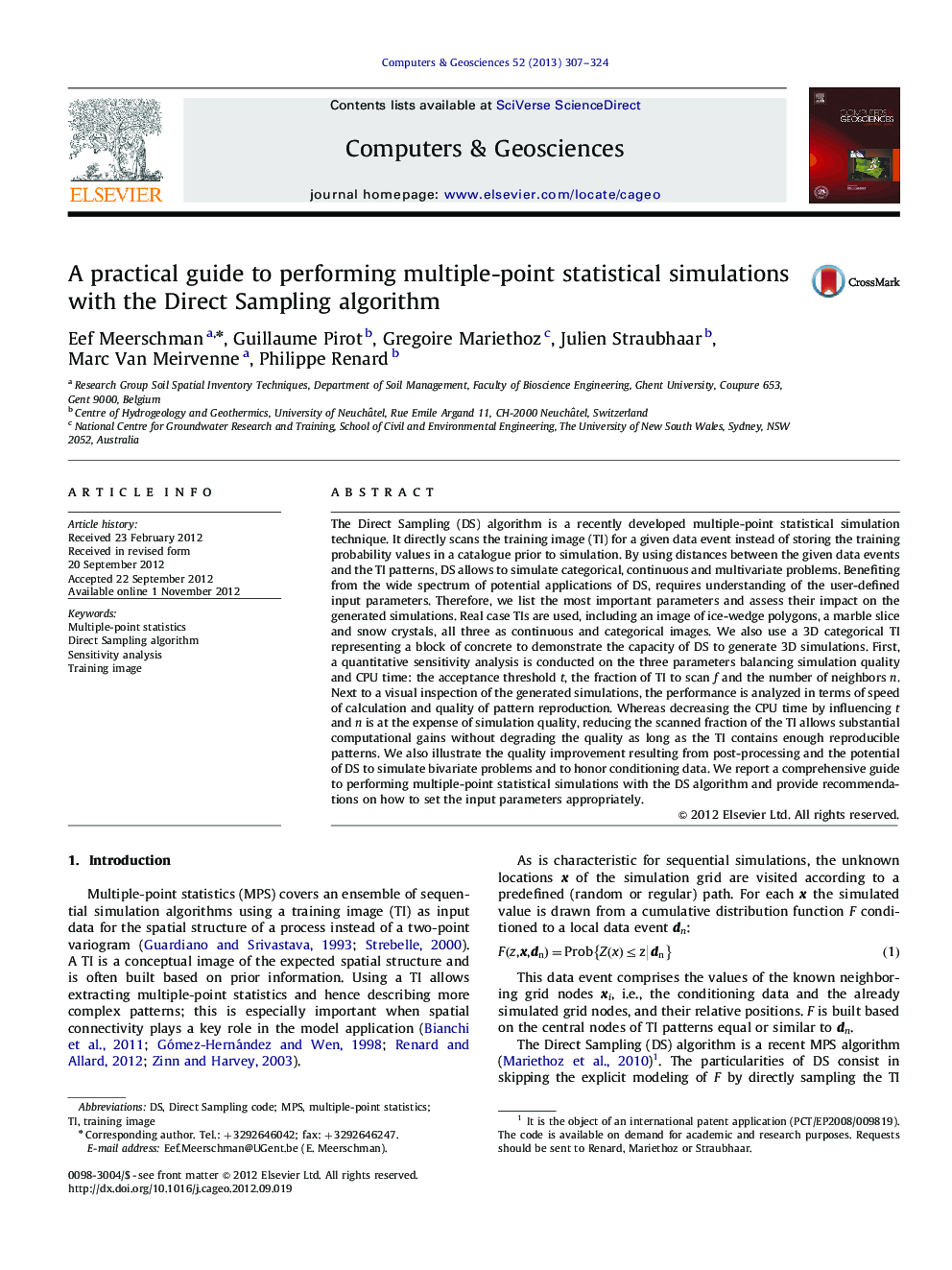| کد مقاله | کد نشریه | سال انتشار | مقاله انگلیسی | نسخه تمام متن |
|---|---|---|---|---|
| 507900 | 865152 | 2013 | 18 صفحه PDF | دانلود رایگان |

The Direct Sampling (DS) algorithm is a recently developed multiple-point statistical simulation technique. It directly scans the training image (TI) for a given data event instead of storing the training probability values in a catalogue prior to simulation. By using distances between the given data events and the TI patterns, DS allows to simulate categorical, continuous and multivariate problems. Benefiting from the wide spectrum of potential applications of DS, requires understanding of the user-defined input parameters. Therefore, we list the most important parameters and assess their impact on the generated simulations. Real case TIs are used, including an image of ice-wedge polygons, a marble slice and snow crystals, all three as continuous and categorical images. We also use a 3D categorical TI representing a block of concrete to demonstrate the capacity of DS to generate 3D simulations. First, a quantitative sensitivity analysis is conducted on the three parameters balancing simulation quality and CPU time: the acceptance threshold t, the fraction of TI to scan f and the number of neighbors n. Next to a visual inspection of the generated simulations, the performance is analyzed in terms of speed of calculation and quality of pattern reproduction. Whereas decreasing the CPU time by influencing t and n is at the expense of simulation quality, reducing the scanned fraction of the TI allows substantial computational gains without degrading the quality as long as the TI contains enough reproducible patterns. We also illustrate the quality improvement resulting from post-processing and the potential of DS to simulate bivariate problems and to honor conditioning data. We report a comprehensive guide to performing multiple-point statistical simulations with the DS algorithm and provide recommendations on how to set the input parameters appropriately.
► We perform a comprehensive sensitivity analysis for the Direct Sampling code.
► We provide recommendations to set t, f and n balancing simulation quality and CPU time.
► For categorical TIs it is advised to add a post-processing step for noise removal.
► In multivariate cases the user need to consider the weights given to each variable.
► The weight given to the conditioning data strongly influences pattern consistency.
Journal: Computers & Geosciences - Volume 52, March 2013, Pages 307–324